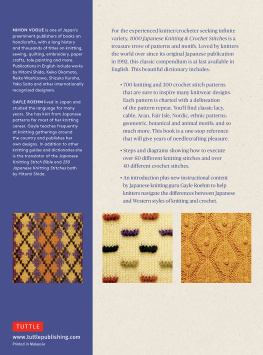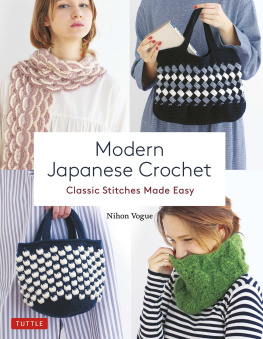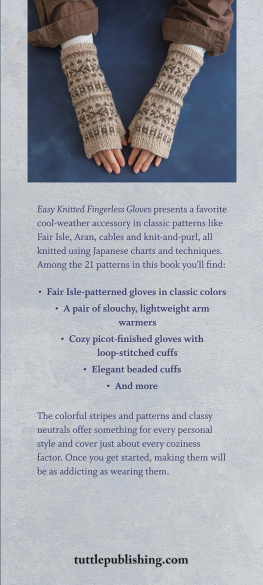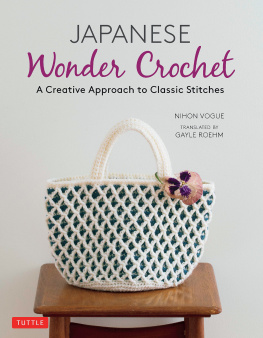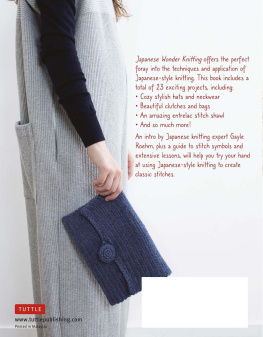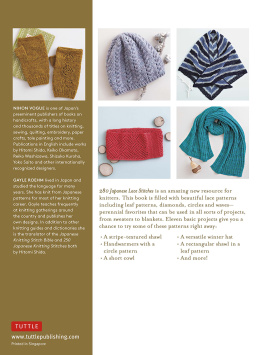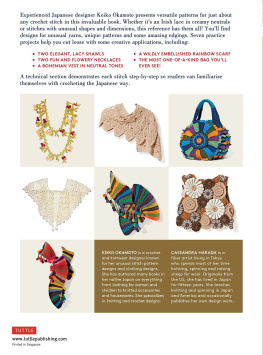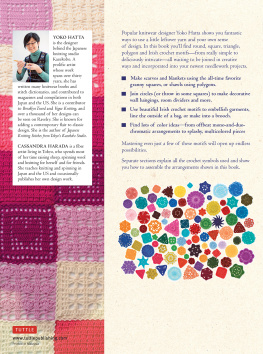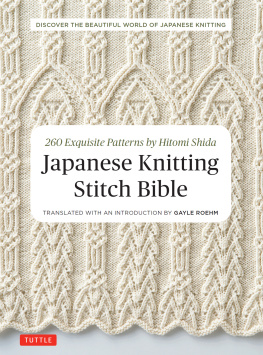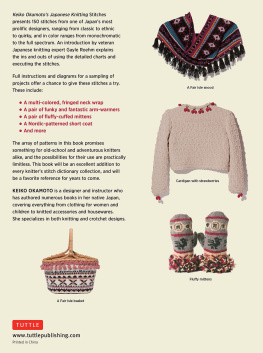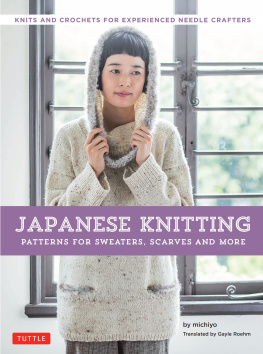Nihon Vogue - 1000 Japanese Knitting & Crochet Stitches: The Ultimate Bible for Needlecraft Enthusiasts
Here you can read online Nihon Vogue - 1000 Japanese Knitting & Crochet Stitches: The Ultimate Bible for Needlecraft Enthusiasts full text of the book (entire story) in english for free. Download pdf and epub, get meaning, cover and reviews about this ebook. year: 2020, publisher: Tuttle Publishing, genre: Home and family. Description of the work, (preface) as well as reviews are available. Best literature library LitArk.com created for fans of good reading and offers a wide selection of genres:
Romance novel
Science fiction
Adventure
Detective
Science
History
Home and family
Prose
Art
Politics
Computer
Non-fiction
Religion
Business
Children
Humor
Choose a favorite category and find really read worthwhile books. Enjoy immersion in the world of imagination, feel the emotions of the characters or learn something new for yourself, make an fascinating discovery.
- Book:1000 Japanese Knitting & Crochet Stitches: The Ultimate Bible for Needlecraft Enthusiasts
- Author:
- Publisher:Tuttle Publishing
- Genre:
- Year:2020
- Rating:3 / 5
- Favourites:Add to favourites
- Your mark:
1000 Japanese Knitting & Crochet Stitches: The Ultimate Bible for Needlecraft Enthusiasts: summary, description and annotation
We offer to read an annotation, description, summary or preface (depends on what the author of the book "1000 Japanese Knitting & Crochet Stitches: The Ultimate Bible for Needlecraft Enthusiasts" wrote himself). If you haven't found the necessary information about the book — write in the comments, we will try to find it.
1000 Japanese Knitting & Crochet Stitches is a treasure trove of needlecraft patterns and motifs for experienced knitters and crocheters seeking to create and better understand the infinite variety of their craft. This Japanese reference work is beloved by knitters the world over, and the English version will allow even more crafters to enjoy these techniques.
This dictionary includes 700 original knitting stitch patterns and 300 original crochet patterns that have inspired many modern Japanese knitwear designs. Youll find classic lacy, cable, Aran, Fair Isle, Nordic, ethnic patterns; geometric, botanical and animal motifs; and so much more. This one-stop reference has detailed stitch diagrams showing how to execute over 60 different knitting stitches and over 40 different crochet stitches. Each pattern is charted with a delineation of the pattern repeat.
Like Tuttles other bestselling Japanese knitting dictionariesincluding Hitomi Shidas Japanese Knitting Stitch Biblethis one includes an introduction by Japanese knitting guru Gayle Roehm, which helps those who are new to Japanese knitting navigate the differences between the Japanese and Western styles of knitting and crochet.
Nihon Vogue: author's other books
Who wrote 1000 Japanese Knitting & Crochet Stitches: The Ultimate Bible for Needlecraft Enthusiasts? Find out the surname, the name of the author of the book and a list of all author's works by series.

